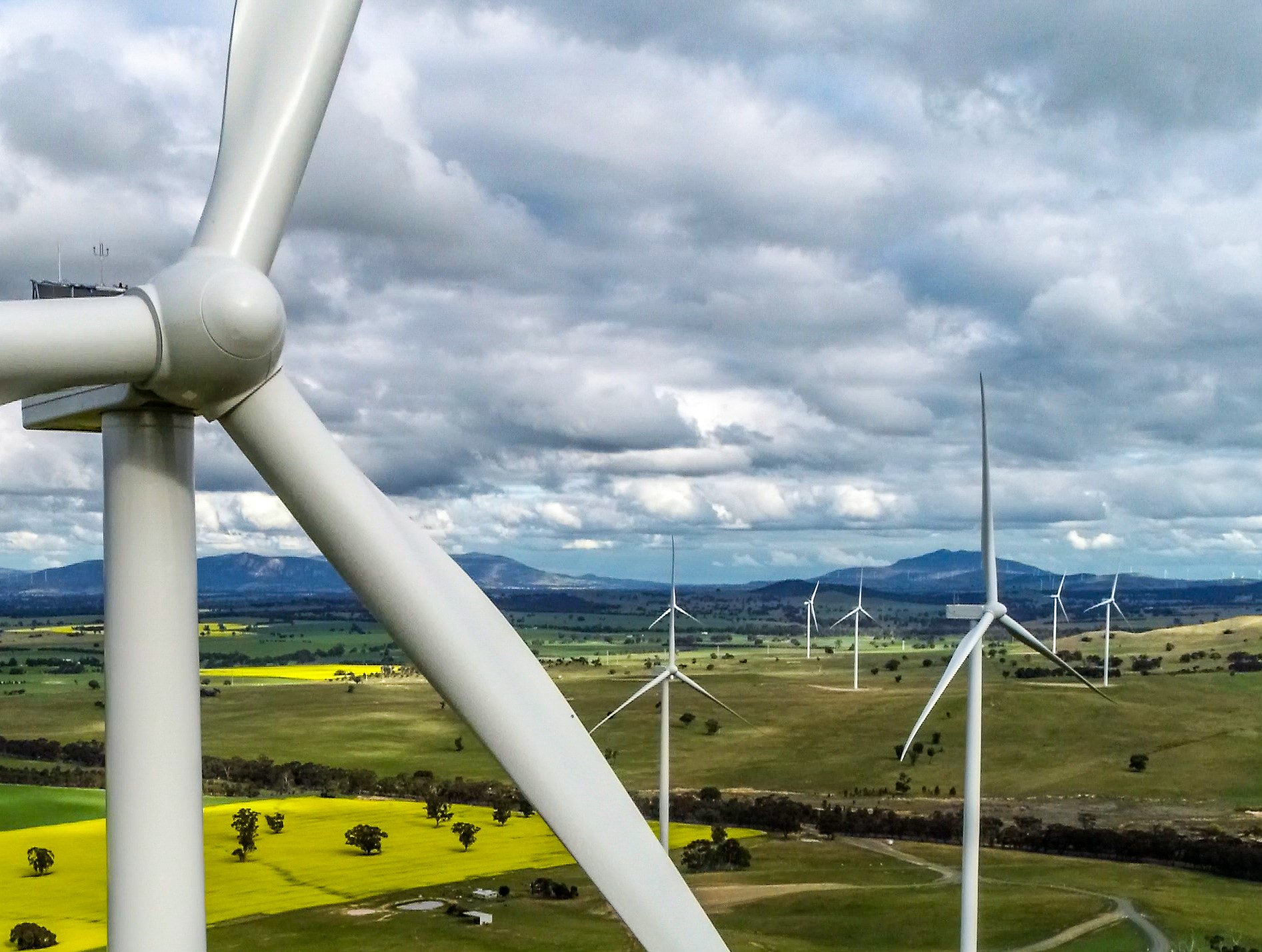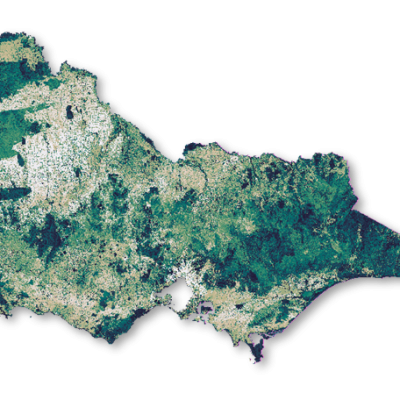Overview
Climate change is a critical issue for Victoria and the world. The intensity and frequency of Victoria’s extreme weather is increasing, resulting in more frequent and intense bushfires and storm events.
Alongside losses and damage to homes, businesses and infrastructure, climate change poses significant risks to Victoria’s unique biodiversity into the future.
Renewable energy will play the central role in achieving Victoria’s 2045 net-zero emissions goal. By doing so, renewable energy projects help mitigate a key threat to biodiversity by cutting greenhouse gas emissions and reducing the worst impacts of climate change.
As the renewable energy sector continues to expand across Victoria, it is critical that robust environmental assessments and guidance are in place to identify and avoid, mitigate and manage impacts on biodiversity.
The Handbook for the development of renewable energy in Victoria provides guidance to project proponents and environmental and planning assessors and decision-makers about how to manage impacts on Victorian threatened bird and bat species from renewable energy development.
A better approach to managing biodiversity impacts of renewable energy projects

In April 2024, the Victorian Government released the Joint Ministers’ Statement – A better approach to managing biodiversity impacts of renewable energy projects, which outlines the Government’s approach to ensuring a swift and successful energy transition while protecting our unique biodiversity.
The key actions are:
- Improved spatial analysis that identifies risks and opportunities for biodiversity harm reduction and renewable energy development, which includes the new Habitat Value Map and Marine Biodiversity Values map now available on DEECA's website.
- Targeted research projects to fill critical knowledge gaps about bird and bat impacts and the effectiveness of mitigation measures, to inform policy development. Outcomes will be published as they become available on DEECA's Arthur Rylah Institute for Environmental Research website (ARI).
- Improved guidance for addressing the impacts of renewable energy facilities that reflects a strategic and risk-based approach in line with global best practice, available below.
Guidance for addressing the impacts of renewable energy facilities
DEECA has developed guidance to enable proponents and decision makers to better assess and address impacts from renewable energy projects on Victoria's threatened bird and bat species. The Handbook for the development of renewable energy in Victoria:
- clarifies the government’s expectations in relation to managing impacts on threatened bird and bat species
- can be used at any time in the development process from the site selection stage, to design, construction and operation
- describes methods that can be used by project proponents to manage the impacts on threatened bird and bat species of their projects using the mitigation hierarchy
- incorporates specific guidance to manage impacts on certain threatened bird and bat species from onshore wind energy facilities.
Application of Handbook
The Handbook takes effect from 29 May 2025 and applies to onshore renewable energy facilities that are likely to have an impact on Victoria's threatened bird and bat species. The Handbook applies to all approval pathways for onshore renewable energy facilities:
- Development Facilitation Program / other planning scheme clauses
- Environment Effects Statement / Environment Report.
Transitional arrangements
Transitional arrangements will apply to allow renewable energy proponents adequate time to prepare for the introduction of the new guidance.
A proponent will not be expected to apply the Handbook to their project if:
- prior to commencement of the Handbook:
- the project has been referred to the Minister for Planning for assessment under the Environment Effects Act 1978
- an assessment under the Environment Effects Act 1978 has commenced for the project
- a planning permit application has been lodged for the project; or
- any of the above will occur within 12 months from the date of commencement of the Handbook.
However, proponents may choose to apply the Handbook regardless of the stage of the project and will need to seek agreement from the Department of Transport and Planning and DEECA to do this.
Read the Handbook
To enable easy access and use, the Handbook document contains all the guidance developed, including specific guidance on Brolga, bats, post-construction mortality monitoring and Bat and Avifauna Management (BAM) Plans in Appendices.
The Handbook for the development of renewable energy in Victoria includes information on:
- Purpose and scope
- Application
- Principles to guide application of the Handbook
- Using a risk-based approach to identify, assess and manage impacts on fauna species
- Monitoring, Reporting and Adaptive Management
It also includes more specific guidance as appendices:
- Appendix 1: Species of Concern List for Onshore Wind Energy Facilities
- Appendix 2: Species Specific Guidance for Onshore Wind Energy Facilities – Victorian Brolga
- Appendix 3: Species Specific Guidance for Onshore Wind Energy Facilities – Bat Species of Concern
- Appendix 4: Guidance for post-construction mortality monitoring for birds and bats from onshore wind energy facilities
- Appendix 5: Guidance for developing Bat and Avifauna Management (BAM) Plans for Onshore Wind Energy Facilities
The Handbook for the development of renewable energy in Victoria (PDF, 3.6 MB)
The Handbook for the development of renewable energy in Victoria - accessible version
(DOCX, 2.7 MB)
Appendix 1 is an updated Species of Concern list for onshore wind energy facilities in Victoria.
In 2019, the (former) Department of Environment, Land, Water and Planning (DELWP) developed a science-based, transparent, and reproducible approach to identify which species should be considered when assessing the impacts of collisions with turbines at Victorian wind energy facilities. See Lumsden at al. 2019.
All threatened bird and bat species listed under the Victorian Flora and Fauna Guarantee Act 1988 (FFG Act) or Commonwealth Environment Protection and Biodiversity Conservation Act 1999 (EPBC Act) were assessed.
Since then, new species have been listed under the EPBC and FFG Acts, and the conservation status (e.g. ‘Vulnerable’, ‘Endangered’) has changed for others. To make sure the latest information has been considered, this list has been updated.
Supporting information on the Updated Species of Concern list for Victoria, relevant to onshore wind energy facilities, is also available:
Appendix 2 provides guidance on how to assess and manage impacts on the Victorian Brolga, including how to identify, assess and buffer important wetlands and the use of other mitigation and compensation measures.
Subject to application of the transitional provisions in section 4.6 of the Handbook, this guidance replaces the Interim Guidelines for the Assessment, Avoidance, Mitigation and Offsetting of Potential Wind Farm Impacts on the Victorian Brolga Population 2011, Revision 1 February 2012.
- Interim Guidelines for the Assessment, Avoidance, Mitigation and Offsetting of Potential Wind Farm Impacts on the Victorian Brolga Population 2011, Revision 1 February 2012. (PDF, 771.2 KB)
- Interim Guidelines for the Assessment, Avoidance, Mitigation and Offsetting of Potential Wind Farm Impacts on the Victorian Brolga Population 2011, Revision 1 February 2012. (DOCX, 584.5 KB)
Relevant shapefiles for the Brolga guidance are available including shapefiles developed by ARI:
- Brolga Area of Interest (ZIP, 50.9 KB)
- Flocking Areas Map (ZIP, 96.9 KB)
- Wetlands in the Brolga Breeding Habitat Suitability Model (ZIP, 9.0 MB)
ARI used expert knowledge, known breeding records, and statistical models to predict suitable brolga breeding habitats across Victoria. Unknown breeding sites are a challenge for conservation managers and policy makers. Many wetlands may be suitable for brolga breeding but are poorly documented.
The Brolga Breeding Habitat Suitability Model, described in a Summary Report, predicts suitable breeding habitat based on remotely sensed environmental characteristics, even for sites that have not been surveyed, including on private land.
Appendix 3 provides guidance on how to assess and manage impacts on 5 bat species of concern, including managing risks of development close to roosting sites for Bent-wing Bat species, pre-construction survey methods and options for measures under the mitigation hierarchy.
Appendix 4 provides guidance on post-construction monitoring, reporting and adaptive management, including how to determine a suitable monitoring period, key considerations for monitoring and reporting, and methods for post-construction mortality monitoring.
Appendix 5 outlines information that can be included in a Bat and Avifauna Management (BAM) Plan for threatened bird and bat species for onshore wind energy facilities.
The specific monitoring, reporting and adaptive management requirements to include in a BAM Plan may vary depending on the project, the risks and impacts to threatened bird or bat species and the level of effectiveness or uncertainty of measures adopted under the mitigation hierarchy.
DEECA conducted public consultation on proposed guidance between December 2024 and February 2025, and further information on the consultation process is available on the Engage Victoria website.
Supporting research
We continue to work to expand our knowledge base and guidance has been informed by DEECA research projects.
Research is ongoing and information will be published on DEECA's Arthur Rylah Institute for Environmental Research website when available. Currently available research includes:
- Assessment, mitigation and monitoring of onshore wind turbine collision impacts on wildlife - a comprehensive synthesis of international research and best practice guidelines to review wind energy impacts and mitigation approaches.
- Estimating potential effectiveness of mitigations for onshore wind energy facilities using structured expert elicitation - Research using structured expert elicitation to estimate the expected effects of different mitigation measures on mortality rates of Victorian bird and bat species.
- Brolga breeding habitat suitability model - predicting state-wide suitable Brolga breeding habitat using known Brolga breeding records and remotely sensed environmental data.
- Comparison of pre- and post-construction survey results for birds and bats at Victorian wind energy facilities - this research looked at how well pre-construction surveys predicted post-construction mortalities.
Additional resources
DEECA's Habitat Value map combines information on thousands of species habitats to show the relative biodiversity value of landscapes in Victoria.
This map can be used to help prioritise areas for protection or to help avoid areas of high biodiversity value in development footprints. Habitat Value does not highlight areas that are “no-go” zones for development. Instead, the map can be used to consider the relative value of biodiversity to help design programs that minimise impacts.
Further information on renewable energy project support and current environmental assessment processes is available:
Page last updated: 21/08/25
